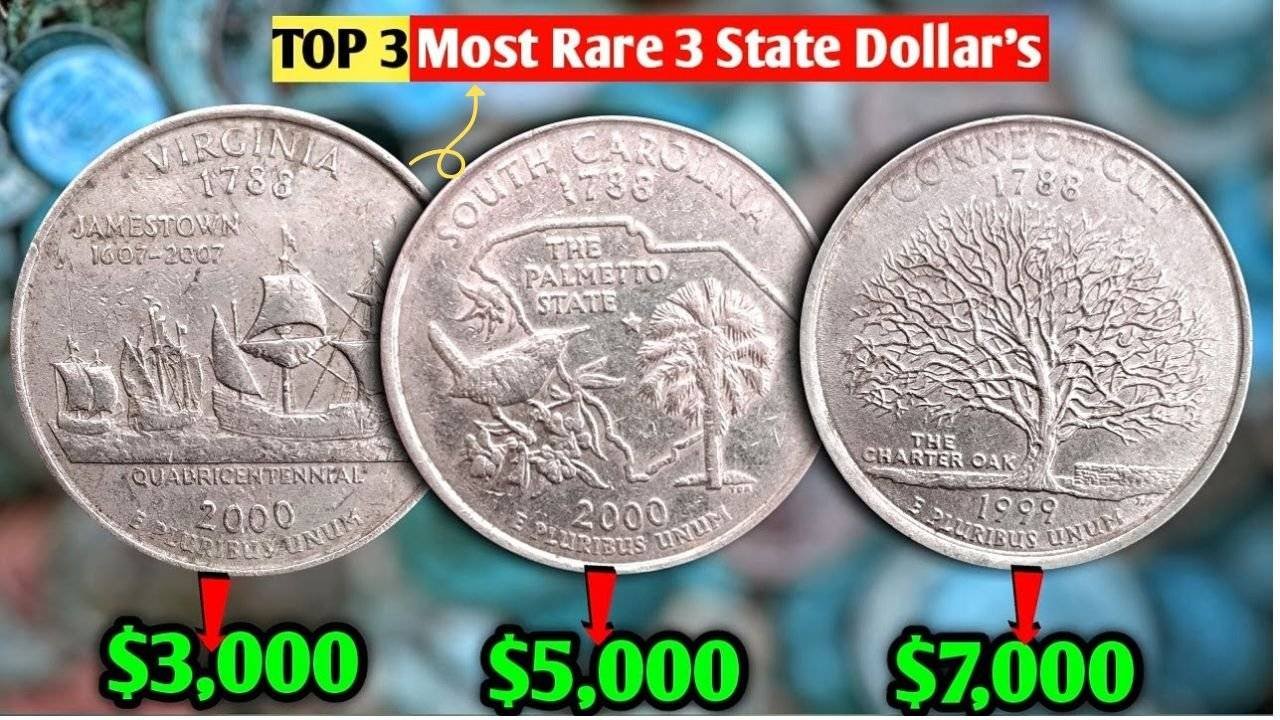3 Rare Coins Valued at $5,000 – Check If You Own One
Have you ever taken a close look at the coins in your pocket or old piggy bank? Most people don’t, assuming they’re only worth their face value. But what if one of those coins could be worth $5,000? It sounds like a dream, but it’s a real possibility.
Certain rare coins that look just like everyday change have become highly valuable collectibles. Sometimes it’s because of a minting error, other times it’s due to a small production number or unique design.
In this article, we’ll cover three specific coins, each valued at around $5,000, that you might already have without realizing it. We’ll also give you tips on how to identify them and what to do if you think you’ve found one.
Why Some Coins Are Worth Thousands
Before we dive into the specific coins, it’s important to understand what gives a coin its high value. Here are a few key reasons:
-
Rarity: Fewer coins produced means higher demand among collectors.
-
Condition: Coins in mint or near-mint condition are worth more.
-
Mint Errors: Mistakes during production make coins more unique and valuable.
-
Historical Significance: Older coins or those tied to a specific event can be more collectible.
Now, let’s take a look at three coins that could turn your spare change into serious cash.
Overview Table – 3 Rare Coins Worth Checking For
| Coin Type | Year | Estimated Value | Key Features |
|---|---|---|---|
| 2004-D Wisconsin Quarter | 2004 | Up to $5,000 | Extra leaf on the corn husk (High/Low Leaf) |
| 1943 Copper Lincoln Penny | 1943 | $5,000+ | Made from copper instead of steel |
| 1955 Doubled Die Lincoln Penny | 1955 | $1,000–$5,000+ | Doubling in letters and date |
3 Rare Coins That Could Be Worth $5,000
1. 2004-D Wisconsin State Quarter (Extra Leaf Error)
In 2004, the U.S. Mint released the Wisconsin state quarter featuring a cow, a wheel of cheese, and a corn stalk. Some of these quarters—minted in Denver—came with an unexpected extra leaf on the corn.
There are two versions:
-
High Leaf: The extra leaf points higher on the stalk.
-
Low Leaf: The leaf droops lower near the stem.
These were not part of the original design and are believed to be minting errors. These mistake coins are rare and have sold for up to $5,000 depending on their condition.
How to Check:
Flip the quarter and closely examine the corn stalk. If you see an extra leaf on the left side of the stalk, you could be holding a valuable coin.
2. 1943 Copper Lincoln Penny
During World War II, the U.S. Mint needed copper for ammunition and other military materials. So in 1943, pennies were made from zinc-coated steel instead of copper.
But a few copper blanks (from 1942) accidentally got used, resulting in a small number of 1943 copper pennies.
Only a handful are known to exist, making them incredibly rare. A verified 1943 copper penny can fetch $5,000 to over $100,000, but even worn versions are worth thousands.
How to Check:
A simple magnet test can help. Steel pennies from 1943 will stick to a magnet. Copper ones won’t. If your 1943 penny doesn’t stick, get it checked by a coin expert.
3. 1955 Doubled Die Lincoln Penny
This is one of the most famous and popular error coins among collectors. The 1955 Doubled Die Penny features noticeable doubling on the date and the words “LIBERTY” and “IN GOD WE TRUST.”
It happened because of a misalignment during the minting process, causing the design to be struck twice slightly off position. This doubling makes the letters appear almost as if they have shadows.
In good condition, these pennies have sold for $1,000 to over $5,000, and even lower-grade examples are still worth much more than face value.
How to Check:
You won’t need a microscope—this doubling is visible to the naked eye. If the letters and date look doubled or blurry, it could be the real deal.
FAQs – Frequently Asked Questions
1. How can I know if my coin is valuable?
Start by checking the date, design, and any unusual features. If it matches any known rare coins or error types, get it evaluated by a professional coin dealer or grading service.
2. Should I clean my coin before showing it to someone?
No! Cleaning a coin can damage its surface and reduce its value. Collectors prefer coins in their original condition—even if they look dirty.
3. Where can I sell a rare coin?
You can take your coin to a local coin shop, sell it through an auction house, or list it on a reputable marketplace online. Having it professionally graded first will help get the best price.
4. Can I still find rare coins in circulation today?
Yes, though it’s rare. Many people have found valuable coins in pocket change, coin rolls from banks, or old collections inherited from family members.
5. What does “mint error” mean?
A mint error is a mistake that happens during the production of the coin. This could be a misprint, double strike, off-center image, or use of the wrong material. Some of these errors make the coin more valuable.
Conclusion
It’s exciting to think that a coin you’ve had for years or just got in change could be worth thousands. While most coins are common, a few slip through with errors or special features that make them rare and valuable.
The 2004-D Wisconsin Quarter, 1943 Copper Penny, and 1955 Doubled Die Penny are just three examples of coins that have sold for up to $5,000 or more. Take some time to look through your coins—you never know what hidden treasure you might find.
